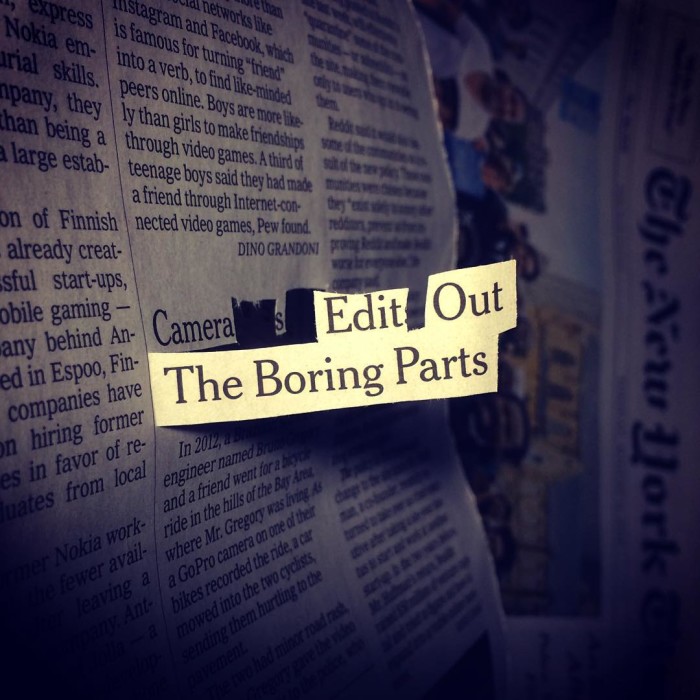Lots of writers — myself included — have stressed the importance of subtraction, or knowing what to leave out.
Mark Twain: “A successful book is not made of what is in it, but of what is left out of it.”
Dizzy Gillespie: “You spend a lifetime playing music to learn what not to play.”
Elmore Leonard: “Try to leave out all the parts readers skip.”
But what if you leave out the wrong stuff? How do you know what to leave in?
Here’s David Mamet, in Three Uses Of The Knife:
I used to say that a good writer throws out the stuff that everybody else keeps. But an even better test occurs to me: perhaps a good writer keeps the stuff everybody else throws out.
Peter Turchi told me when he’s teaching writing workshops, he’s careful not to try to “fix” a student’s story too quickly:
[W]e have to recognize that the thing that looks most flawed, might, in fact, be the most interesting thing in the work. So we’re not looking for the thing that functions best, because to do that is to only reward the most conventional and most familiar moves the work makes. But to try to recognize the thing that excites us the most, or intrigues us the most, which may be something the writer doesn’t even understand.
“Life is selection,” wrote Ralph Waldo Emerson. “The work of the gardener is simply to destroy this weed, or that shrub, or that tree, & leave this other to grow.”
But which weed? Which shrub? Which tree?
Exactly. That’s the art.

